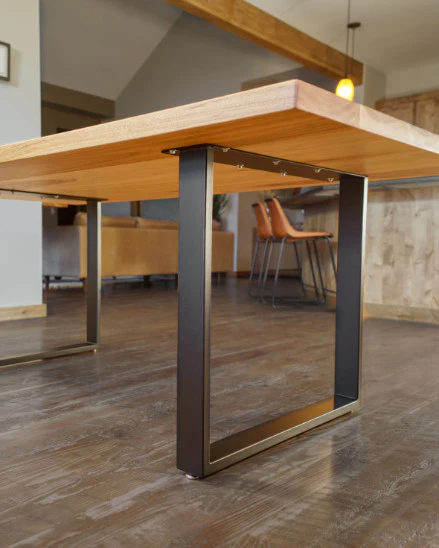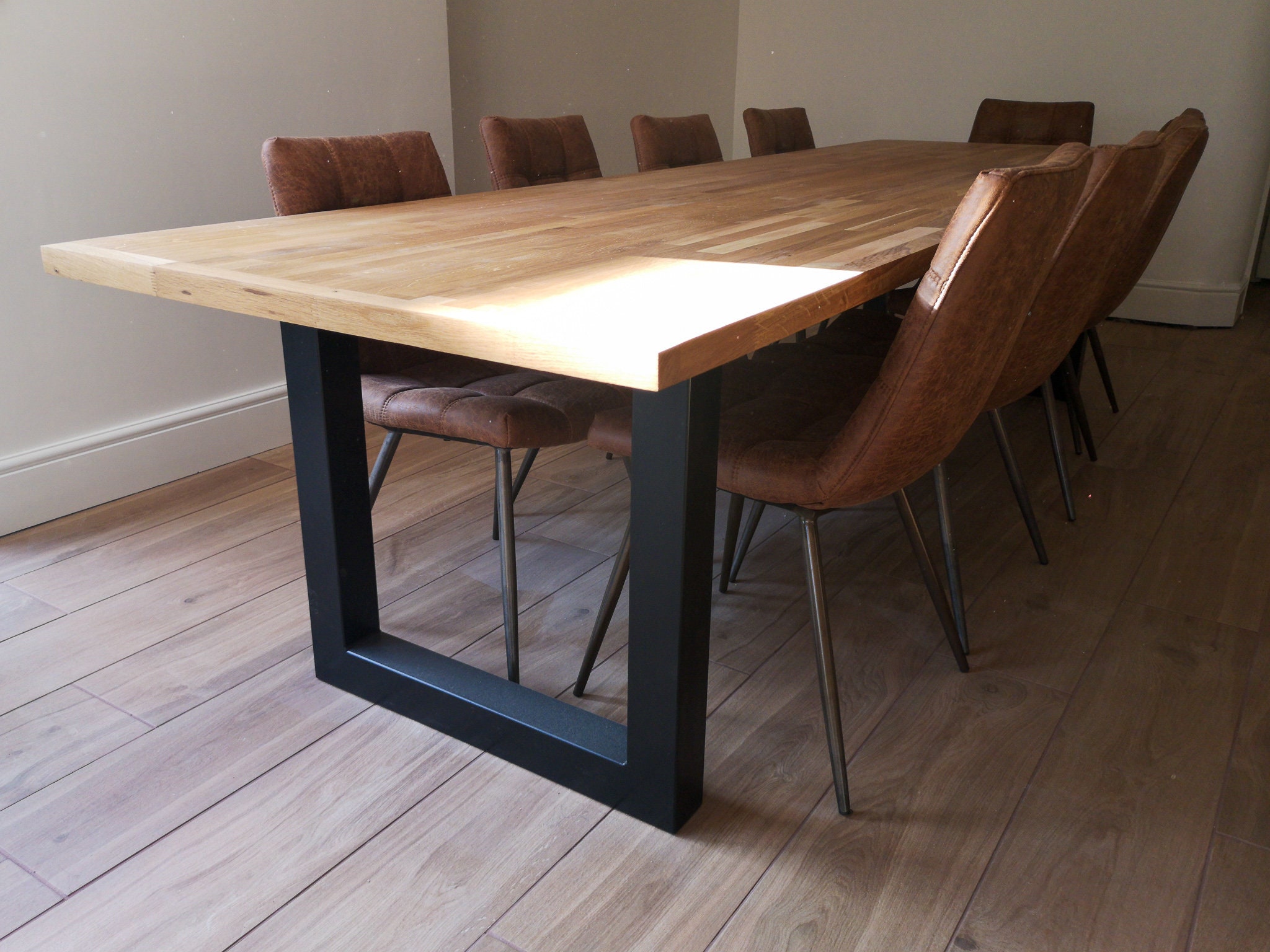Selecting the Perfect Dining Table: What Styles Job Best for Your Home?
Picking the excellent eating table for your home can be a nuanced procedure that balances looks and performance. Whether your area leans in the direction of standard elegance, modern-day minimalism, rustic charm, or industrial trendy, the selection of designs readily available can satisfy varied preferences. Each design supplies one-of-a-kind benefits and obstacles that can either improve or disrupt your eating area's harmony. Recognizing how various materials, shapes, and dimensions engage with your existing style is essential. To navigate these choices effectively and locate a table that really enhances your home, think about the following facets thoroughly.
Evaluating Your Room
Assessing the dimensions and design of your eating location is a vital first step in picking the excellent table. Begin by measuring the size and size of the room, accounting for doorways, home windows, and other building attributes that could influence table placement. This makes sure that your table not just fits but also enables comfortable motion around it.
Consider the variety of individuals you commonly captivate. A table should accommodate your home's day-to-day demands while offering enough adaptability for periodic visitors. Generally of thumb, allot a minimum of 24 inches of table width each to guarantee a comfortable eating experience.
It's also necessary to maintain appropriate clearance around the table. Ideally, there need to go to least 36 inches in between the table side and wall surfaces or other furniture, enabling simple gain access to and motion. For spaces where chairs with arms or extra storage units like buffets are involved, increasing this clearance to 48 inches is a good idea.
Lighting and atmosphere play substantial functions also. Make sure that your table lines up with existing lighting components or strategy for sufficient lights solutions. This extensive spatial evaluation guarantees that your eating table not just fits literally however likewise integrates with your room's general capability and visual.
Popular Table Styles

Traditional table commonly include luxuriant details, curved legs, and rich timber finishes, evoking a sense of ageless style. They are perfect for homes with traditional style or those wanting to include a touch of elegance to their eating location.
Modern eating tables focus on simpleness and clean lines, commonly including products like glass and metal. These tables are suitable for modern spaces, supplying a streamlined and clean appearance that enhances minimal layout approaches.
Rustic eating tables, on the various other hand, emphasize natural materials and a handmade look - dining room table legs. They typically feature reclaimed wood and a distressed surface, creating a warm and welcoming atmosphere. These tables function well in farmhouse-style homes or those looking for a relaxing, organic feeling
Industrial dining tables integrate resources such as metal and timber, usually showcasing an utilitarian aesthetic. This design is fit for lofts or urban spaces, including a touch of rugged beauty and toughness to the dining experience.
Each design provides distinct advantages, making it necessary to pick one that aligns with your home's general layout and your personal choices.
Product Choices
When choosing an eating table, the option of material plays a crucial function in figuring out both the table's visual appeals and functionality. Timber, metal, glass, and composite products each deal one-of-a-kind advantages and challenges, making it essential to align the product with your home's style and lifestyle demands.
Timber is a classic and functional choice, readily available in varieties such as oak, walnut, and mahogany. Understood for its durability and heat, timber complements both typical and contemporary interiors. Nevertheless, it requires normal maintenance to avoid scratches and warping.
Metal tables, often crafted from stainless steel, aluminum, or functioned iron, are praised for their contemporary allure and toughness. They are specifically matched for commercial or minimal settings however can be susceptible to dents and may feel cool to the touch.
Glass eating tables bring an air of elegance and visibility, perfect for smaller sized spaces as they develop an impression of even more room. While easy to clean, glass can be at risk to spots and needs cautious managing to avoid chips and fractures.
Composite materials, such as MDF and plywood, offer economical and personalized services, though they might do not have the long life of all-natural products. Selecting the right product ensures your table is both a useful property and an aesthetic pleasure.
Sizes And Shape Considerations
After identifying the suitable product for your eating table, the next consideration is picking the right form and dimension to fit your room. The shape of the table dramatically influences the area's visual and performance. Rectangle-shaped tables, the most common shape, are excellent for bigger rooms and can fit a greater number of visitors. They likewise enable an extra formal dining experience. Conversely, rounded tables cultivate a sense of intimacy and are excellent for smaller dining locations, urging conversation by removing this content corners and making everybody feel just as included.
Dimension is just as essential and should be determined by both the area's measurements and the variety of people you intend to seat routinely. As a rule of thumb, allot a minimum of 24 inches of table size per individual to make certain comfortable eating. Furthermore, take into consideration the table's clearance space: there should go to the very least 36 inches between the table edge and the walls or various other furnishings. This makes sure that restaurants can move quickly without feeling cramped. Expanding tables use flexibility if you often host bigger gatherings, giving additional seats when needed without inhabiting added space daily. Selecting the ideal sizes and shape ensures both practicality and aesthetic harmony in your dining area.
Matching Your Design
Choosing a table that this page integrates with your existing decoration is critical in creating a natural and inviting room. Begin by examining your present interior decoration style, whether it be contemporary, traditional, rustic, or diverse. The table should enhance the overall visual, not take on it. As an example, a streamlined, minimalist table with tidy lines is optimal for a modern home, while a vintage, luxuriant table suits an extra conventional setup.
Shade and material are similarly substantial. If your design includes cozy tones and natural materials, take into use this link consideration a wood table to enhance the organic feeling. Conversely, a glass or metal table may be better in an area controlled by awesome colors and commercial components. Pay attention to the surface, as it must mirror various other furnishings and fixtures to maintain harmony.
Appearance plays a crucial role as well. A rough-hewn, recovered wood table can add character to a rustic room, while a sleek marble surface area can boost a luxurious dining location. Think about the scale and proportion of the table in relationship to the area dimension and existing furniture. A well-matched dining table not only enhances visual allure but likewise enriches the overall eating experience.

Conclusion
Choosing the suitable eating table requires cautious consideration of area, style, materials, shape, and dimension. Traditional tables enhance timeless insides with abundant timber surfaces, while contemporary tables suit contemporary setups via glass and steel.